You may find it a bit challenging to compile a ranking of the top automobiles ever. After all, it takes a lot of judgment to make a 1970s Car list of the leading vehicles.
The same goes for how you interpret the term “best 1970s Car.” Which vehicle has the best track performance? Is this the sportiest automobile for drivers? Does it offer the flexibility, comfort, and speed that I am searching for? Well, the number of questions is limitless.
This is what this article is all about. In the following discussion, we will talk about the leading models of the 1970s Car that have indeed created a craze in people’s minds. And still, now, they are widely loved and adored by various people throughout the world.
So, without further delay, let’s begin our session about the 12 most significant and important 70s cars.
12 coolest and most amazing in the 1970s Car
These vehicles expanded people’s perceptions of what an automobile can be and helped to create the current auto industry. Sports coupes and supercars merit recognition. SUVs and trucks, which are becoming the standard vehicles that the majority of people purchase, do as well.
Even though innovations like the Model T’s mass manufacturing method or the Volvo’s three-point safety belt were unquestionably important to the creation of the contemporary automobile, it can become a little difficult to trace technological advancements back more than 50 years.
Here are the top 12 cars from the 1970s Car, ranging from useful compacts to flamboyant vehicles suitable for private detectives residing in Hawaii and leading opulent lifestyles.
You may also like this: 12 Most Affordable & Cheapest Ferraris to know 2022-2023
1. 1970 AMC Hornet

Some of the most enduring automobiles from the 1970s car were produced by American Motors, the tiniest of the Big Four. Although most of us are familiar with the Pacer, Gremlin, Javelin, and possibly even the Matador, who knows about the Hornet?
This quirky-looking small sedan was, like many AMC goods, ahead of its time. It was a practical compact that debuted on the market right when America recognized huge automobiles weren’t the future. The Hornet’s obstinate propensity for rebirth set it apart from its rivals.
The 1978 Concord, a restyled version of the AMC Hornet, was combined with four-wheel-drive Jeep components to create the AMC Eagle, which was itself a 25-years-earlier version of the contemporary crossover SUV.
2. 1970 Ford Maverick
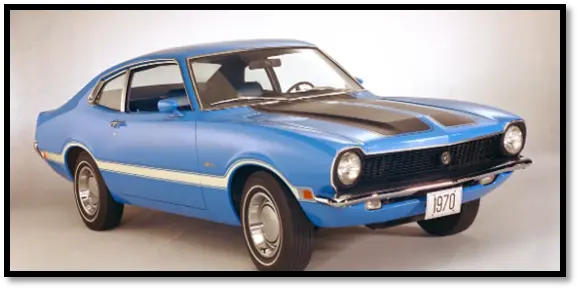
Maverick hasn’t received more attention during the past forty years. This is the typical early 1970s vehicle—a modest, inexpensive sedan, the 1970s Car version of the Nissan Sentra—yet it looks at that cool style!
During the 1970s, everything deserved a hardtop, including the subpar vehicle you bought since you couldn’t get a nicer one. Consumer Reports even preferred the Maverick above its Japanese rivals because it was a dependable runner. However, the automotive industry has all but ignored it.
3. 1971 Volkswagen 411/412
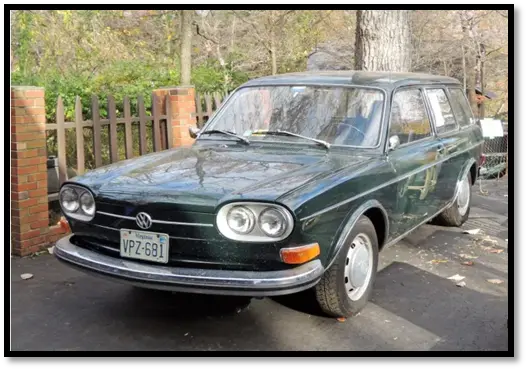
Volkswagen was ecstatic with the Beetle’s success, as well as that of the Bus and the Fastback, and thought it was time to introduce a luxury car to the United States. However, VW’s conception of a luxury car was very much different from an average American.
Of all the air-cooled Volkswagens, the 411 was certainly one of the most contemporary, thanks to its Super Beetle-derived MacPherson strut front suspension. Even though it had conventional metallic paint and floor-to-ceiling carpeting, it still couldn’t compete with Cadillacs.
The automatic gearbox being a great component, was one American luxury demand for which Volkswagen was perfect. The 411 couldn’t, however, summon the performance Americans anticipated from a luxury car—or, for it in that subject, from a ride-on lawn mower—because it was linked to an 80-horsepower Volksboxer.
In 1974, Volkswagen stopped supplying Type 4 to Americans. Thirty years later, the Phaeton, Volkswagen’s subsequent effort at a luxury vehicle, would not perform any better.
4. 1972 Ford Torino
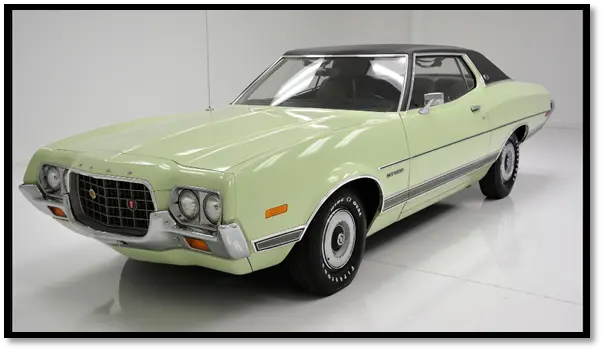
Ford’s intermediate vehicles, the Torino and its somewhat prettier twin, the Gran Torino, fought gallantly against GM’s attractive mid-sizers. They performed a variety of functions, including powerful sports cars, wood-paneled family wagons, and practical but nondescript sedans.
The Torino, which combined blocky 1970s car appearance with sinewy 1960s lines, delivered flair to the masses, as suggested by its Italian name. The Torino in this image was produced from 1972 to 1977 before being abruptly superseded by the LTD II as well as its pretentious upmarket ambitions.
5. 1973 Pontiac Astre

Several people recall GM’s initial attempt at badge-engineering the Pontiac-sized model, but everyone knows the moving calamity that was the Chevrolet Vega.
As you’ve already seen, Pontiac was developing its own tiny vehicle, which, like Chevy’s in-house small car, was delayed by the corporate-designed Vega. And if that weren’t terrible enough, the company was obliged to produce a barely-disguised replica in the Pontiac Astre’s style.
By 1973, GM had fixed the most of the Vega’s issues, but the Astre never became popular since it was too pricey and had a poor enough disguise.
6. 1973 Oldsmobile Omega
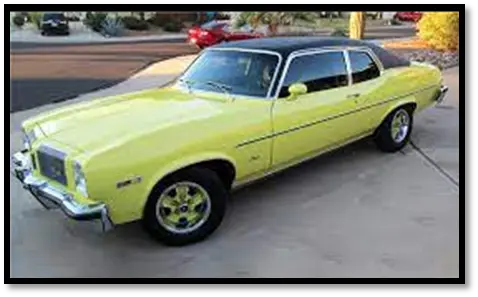
Ever wonder why, when the concept of badge-engineering items initially surfaced, people weren’t all that concerned about it? It wasn’t entirely bad in the start, take a look at the Omega, Oldsmobile’s approach to the famous Chevrolet Nova.
It was comfortable enough, a dependable and sturdy automobile from the 1970s, and different sufficient from Nova to keep its lights up. The similarly overlooked Apollo, Buick’s take on the model, is comparable.
Although it wouldn’t be until Oldsmobile switched to the disastrous front-wheel-drive X-body chassis that the dreadful negative side of brand engineering would become a reality in the 1970s.
7. 1975 Ford Granada
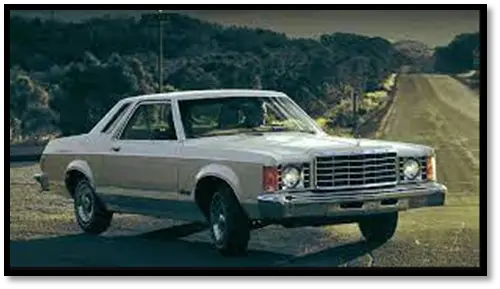
The 1970s had a somewhat stuffy sense of style. The only way to get away with not wearing a formal attire is to work with messy hair or a broad tie. You will find the Ford Granada as a reflection of that era’s trends: erect, formal, and not quite at ease with itself.
Ford advertised the Granada by making cautiously, at first, then gratuitously overt comparisons to the Mercedes-Benz 280. Although this seems absurd in retrospect, a number of Granadas were sold in the 1970s, indicating that the general public at the time believe it.
Even excluding the Mercury Monarch replica, Ford sold over 1.8 million units between 1975 and 1980.
8. 1975 Mercury Bobcat
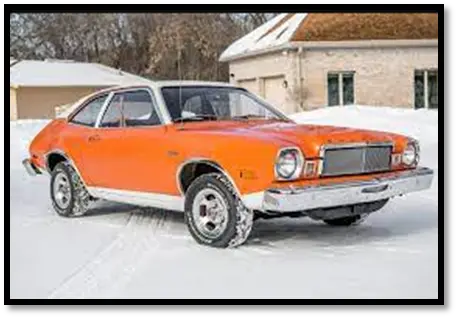
When Ford launched a gussied-up Pinto in the guise of the Mercury Bobcat in 1975, the brand design was still in its beginnings. With such a formal, vertical grille and a boxier bonnet, Ford’s designers made an attempt to distinguish the Bobcat’s front appearance, but the back end constantly had made us smile.
Ford use an extra pair of Pinto taillights and paste the left rear centerline of the right taillight to distinguish the Bobcat from the Pinto, a trick that, judging by the response, probably deceived very few people. But, in actuality, we may be certain that it didn’t: between 1975 and 1980, Ford sold 1.3 million Pintos, while Mercury was unable to move even 225,000 Bobcats.
9. 1977 Datsun 200SX
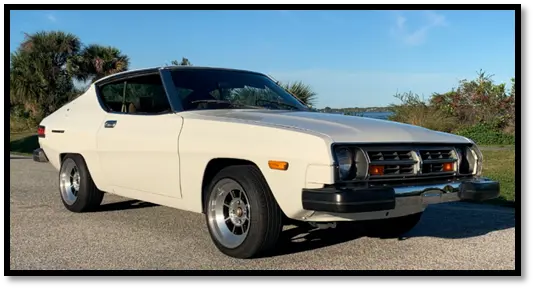
The majority of people know that Japanese manufacturers dominated the American market in the 1980s, but few are aware that their own 1970s models had certain flaws. One of them was the 200SX, a purported sports coupe made by Datsun, which was perhaps the weirdest vehicle of the decade.
The 200SX was spiky and awkward, and while Datsun bragged about the improved fuel efficiency of the B210, the 200SX had a noticeable drinking problem. During that time, the Japanese were renowned for economy vehicles and sports cars, but the 200SX was far from being any of these.
The small number of 200SXs that Datsun was able to sell was quickly devoured by rust, and the 200SX was quickly forgotten like a terrible dream. However, the 200SX’s failure did motivate Datsun to improve; the company introduced a revised 200SX in 1980 that went on to become a beloved standard.
10. 1978 Buick Century/Oldsmobile Cutlass Aeroback

As America’s infatuation with Europe grew in the late 1970s, GM determined that the intermediate vehicles it produced for 1978 required a hatchback profile comparable to those in Europe.
The Buick Century and Oldsmobile Cutlass both received multiple “Aeroback” body designs as a result of that kind of insight. GM decided that Buick and Oldsmobile didn’t require classic hardtop convertible sedans, but Chevy and Pontiac’s intermediates required these.
It took GM two years to put a true sedan into production after the corporation was caught off guard by the failure of these almost-hatchbacks.
How despised were the Aerobacks among the automobile-purchasing public in the 1970s? Less than 48,000 Buick Century fastbacks were sold in the years 1978 and 1979. However, Buick sold 130,000 the car when it was introduced in 1980.
11. 1978 Ford Fairmont
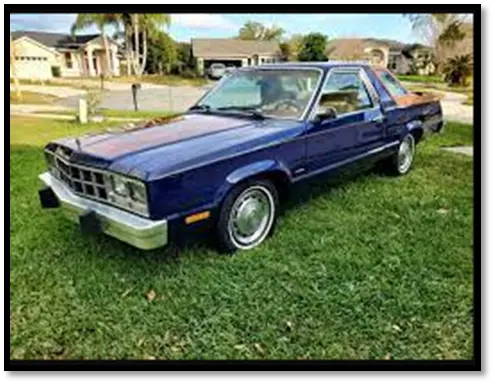
The Fairmont, which raised the bar for simplicity and served as the Ford Granada’s successor, was another indication of America’s growing fascination with Europe.
The Fairmont seems to have been a brown paper bag of a vehicle when it was stripped of any formal decoration.
Instead, it was straightforward, honest, and functional—a welcome difference from the enormous, excessively shiny chrome barges that made up the majority of the Ford range in the 1970s.
In a peculiar fashion, the two-door model, known as the Fairmont Futura, had a stylish appearance. The Fox platform on has been mostly forgotten, but it is also well-known.
12. 1978 Dodge Magnum

In the late 1970s, Ford Thunderbird, with its sharply curved and sharp-looking exterior, was Chrysler’s main competition, and this Dodge Magnum was their effort at a contemporary “personal luxury” automobile. Its transparent light shields, which folded downwards when the lights were turned on, are reason enough to appreciate it, if nothing else.
Surprisingly, stone-age components were used to construct the then-“new” Magnum. One of the final Chrysler passenger vehicles to feature a big-block engine, in this instance, the 400 cubic inches (6.6 liters) development of the illustrious 383, it was built on a mid-size chassis initially create in the early 1960s.
Few people were interested in a large, two-ton, V-8-power coupe since Chrysler was in grave financial problems, had no money for advertising, and gas costs were skyrocketing. As a result, the Dodge Mirada, the Magnum’s 1980s successor, and its dismal sales were both forgotten.
To Wrap Up
That’s all from the discussion regarding the 1970s cars.
Just to mention a few, cars like the Ford Granada, Dodge Magnum, and others have fascinating, if not always joyful, tales to tell. But those weren’t the only notable vehicles of the 1970s, a decade marked by a love of unconventional vehicles, many of which history has largely forgotten. Each of the creations is certainly worth appraisal for!
Now, it’s time to make some room in your space because the vehicles from the 1970s Car indeed deserve a spot in your collective consciousness.
